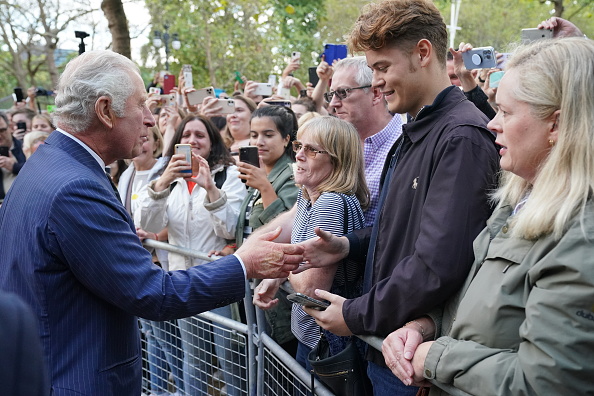King Charles III must find the balance of being a modern royal, following in his mother’s path

Our new King, coming to the throne after his mother Elizabeth II, followed an ancient tradition on Saturday: the national proclamation of the accession of the new monarch. After a meeting of the Privy Council and the signing of documents, the Garter King of Arms – a senior ceremonial figure – made the proclamation from a balcony in St James’ Palace.
While the rituals were carried out as they had been just over 70 years ago, there was innovation. For the first time, the whole event was televised, opening it to the public gaze. Charles III will follow in his late mother’s footsteps, balancing the retention of visually powerful ceremonial moments, carried out with due traditional ritual formality, but with a twist.
Elizabeth II proved herself, from the start, to be willing to innovate when it came to the pomp and pageantry. She learned to Zoom during lockdown, and to use social media, so she was not, and did not appear, out of touch.
Behind the scenes the introduction of new versions of traditions was not always welcomed, but she persisted. Particularly at first, the young Queen had to face a formidable enemy to change – her mother. One of the earliest changes Elizabeth II presided over related to the royal footmen. The Duke of Edinburgh first suggested that these royal factotums should stop wearing wigs, and the Queen agreed. The change was introduced, and few of those visiting the palace, whether politicians or foreign ambassadors, noticed the disappearance of these uncomfortable and expensive accoutrements, as the lavish uniforms remained. Also during her reign, internal intercom systems were introduced to enable messages to be passed more efficiently than via carrying written missives on silver trays.
More publicly controversial was the decision to televise her coronation in 1953. The Queen Mother and Winston Churchill, her first prime minister, were horrified. The intrusion of cameras into this crucial event was held by many to be dangerously populist. However key figures like the Duke of Edinburgh and Lord Woolton, then Lord President of the Council, were enthusiastic supporters of broadcasting not just the coronation procession, but the ceremony inside the Abbey itself.
The BBC had done its first significant outside broadcast of ceremonial events for the coronation of George V in 1937. Yet, the events inside the Abbey had been considered too sacred to be exposed to a possibly profane public audience. The same arguments were used in 1952, when the coronation of the new Queen was being planned. But the suggestion of full coverage made sense to the more forward-thinking of the Queen’s political advisors and courtiers. So it was televised live, and in addition, a high-profile documentary film was released a week later and shown around the world to bring the ceremony to the Commonwealth.
Elizabeth II recognised that “criticism is good for people and institutions that are part of public life”. She understood her duty to respond to those who gave her their loyalty when they demanded change, or at least modification. Aided and abetted by a technologically-minded husband, she consistently modernised the public presentation of the monarchy to her subjects. She didn’t stop invoking the power of continuity – maintaining the rituals that gave royal ceremonial its memorable pageantry. But new perspectives enabled a greater ability to promote the institution and the individual inhabiting it. She understood that it was possible to be dignified, but also add fun to an occasion.
This was epitomised in her humorous contributions, in her Diamond and Platinum Jubilee years, when she appeared before the world apparently parachuting in to the Opening Ceremony of the London Olympics. More recently she shared a joyous tea-party with Paddington Bear, drawing a marmalade sandwich out of her iconic handbag. She demonstrated a sure hand in what and when to modernise, and what had to be seen to be preserved for the dignity of the institution. Her management of the public face of monarchy was characterised by adaptability as well as conservatism.
In his mother, King Charles III has a model, but it will be a constant balancing act ahead.
